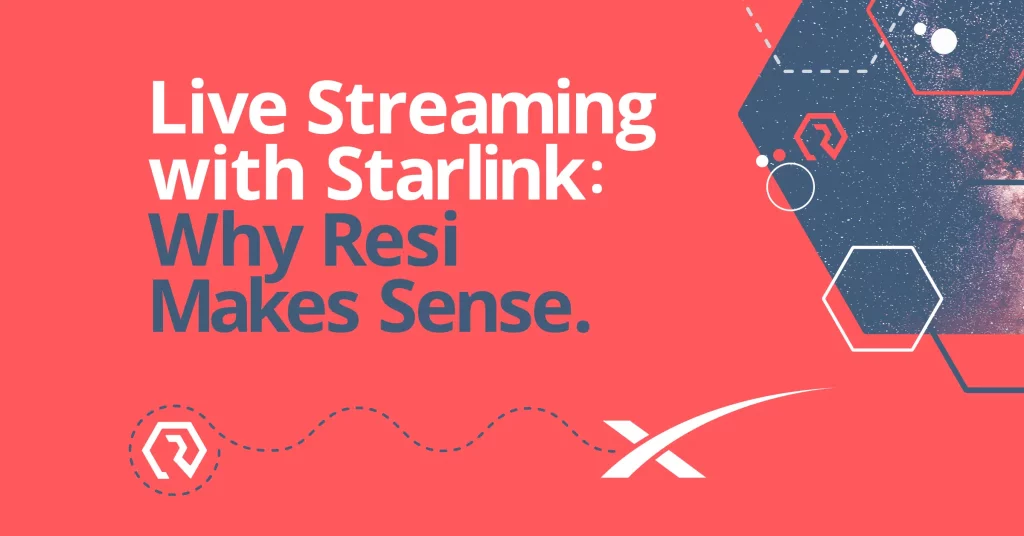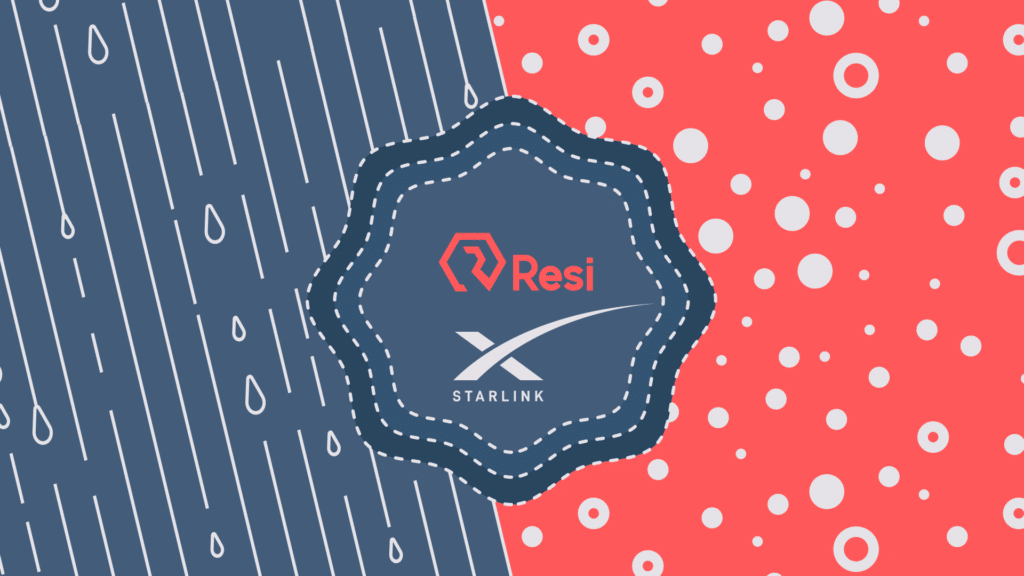Livestreaming With Starlink: Why Resi Makes Sense
- by admin
- in Technology
- on February 9, 2024

Despite the exponential growth of the Internet, there are still many regions of the world without reliable access. In fact, 36.8% of the world population still doesn’t have access to the Internet at all. Many of these people lack Internet access because the areas they live in are unsuitable or cost-prohibitive for traditional ground-based infrastructure like wires and cables.

SpaceX’s Starlink project aims to connect the entire globe to the Internet, even in previously inaccessible areas, using low orbit satellites. High-performance satellite Internet could be an incredible opportunity for not just consumers, but video broadcasters and other businesses as well.
In this post, we’ll look at what Starlink is, why it could be useful for video streaming, and how broadcasters can make their Starlink streaming infrastructure even more reliable with Resi.
Best Livestreaming Equipment
Discover what top-rated equipment we recommend adding to your church streaming toolkit.
Download for free!
What Is Starlink?
Starlink is a new satellite Internet service being developed by SpaceX. Using thousands of small satellites deployed as clusters in low earth orbit, combined with ground receivers, Starlink will be capable of providing broadband Internet connections to locations that were previously inaccessible.
Along with a monthly subscription, Starlink users will need to purchase a special antenna and router. By beaming an Internet signal to and from satellites and antennas using lasers, Starlink eliminates the need for costly ground infrastructure like cables or fiber. The use of laser beams means the signal will be able to send data at almost the speed of light, which is even faster than fiber-optic Internet.
As of 2021, SpaceX has launched over 1,200 satellites. For Starlink to provide high-speed Internet anywhere around the world, SpaceX hopes to launch around 42,000 satellites in the next few decades.

The Benefits of Starlink for Video Streaming
While there have been satellite Internet services for a long time, Starlink is the first to place satellite clusters over 60 times closer to Earth to improve performance. Starlink’s unique approach could be ideal for livestreaming in the future because the service offers greater bandwidth, lower latency, and improved accessibility.
Since high bandwidth is crucial for video streaming, Starlink’s future projection that the service could provide up to 1 Gbps bandwidth in the future is highly beneficial for broadcasters. Early reports of the service suggest 20 Mbps upload bandwidth is currently more realistic. Starlink is still in its beta release, but as SpaceX continues to launch more satellites, it’s likely that bandwidth will increase.
Along with high bandwidth, lower latency is another key benefit of Starlink. Latency is the time it takes for data to reach its destination and back, which would include connecting to a Starlink satellite. Since Starlink satellites are around 342 miles above Earth’s surface, rather than 22,200 miles like traditional satellite Internet solutions, latency can be as low as 20-40 milliseconds.
Most importantly, Starlink enables live broadcasts from areas that previously had poor or non-existent Internet access. Since the satellite service is unbounded to traditional ground infrastructure, it’s possible to set up video streaming infrastructure in rural areas or underdeveloped regions. With Starlink, video streaming on ships, aircraft, and other extreme situations could also be possible.
Reliable Livestreaming Over Satellite With Resi
Starlink may provide a high-performance satellite Internet service, but there are always inherent challenges with satellite connectivity. Inclement weather, such as storms, clouds, or snow, could prevent signals from reaching the satellite constellation. While weather can also affect cellular and WiFI signals, the distance to reach satellites is much further, so there’s a greater chance for satellite signals to encounter interference.
With Resi’s technologies, however, broadcasters can still deliver reliable video streams with inconsistent satellite network connectivity. In fact, Resi has already been deployed on many satellite-based Internet projects in the past, including Royal Caribbean’s first stream between two cruise ships. Here’s a breakdown of how Resi’s products can form a complete end-to-end workflow for livestreaming over Starlink without downtime, buffering, or any other negative impact to the viewing experience.
For one, Resi’s Livestream Platform utilizes Resi’s Reliable Streaming Protocol (RSP) to ensure 100% reliable delivery of video content without buffering even through packet loss and complete connection interruptions. RSP works by sending data on a short delay and verifying a complete copy reaches its destination, selectively retransmitting any data that was corrupted during transmission. This means that your Internet connection can be disrupted completely for minutes at a time with no impact to viewing experience.
Secondly, Resi leverages cloud transcoding to reduce the amount of upload bandwidth necessary during livestreaming. Since the platform’s custom transcoding engine is deployed on Kubernetes clusters, broadcasters can stream to massive audiences at varying bitrates without impacting transmission from the broadcasting site. The ability to offer multiple renditions of a video stream at different qualities to improve the viewing experience is called adaptive bitrate streaming.
RSP is also helpful when using Resi’s Multisite solution for point-to-point video transmission. That’s because multisite broadcasting over satellite Internet exposes broadcasters to variable weather conditions at not just the broadcast site, but all receiving venues as well. Besides RSP, multisite leverages hardware decoders that can pre-download live video ahead of time to prevent interruptions.
Resi’s technologies can ensure a reliable video streaming workflow no matter the network conditions. With RSP, broadcasters can overcome temporary outages when live or multisite streaming to deliver a world-class viewing experience over satellite, cellular, cloud, and any other connection.

